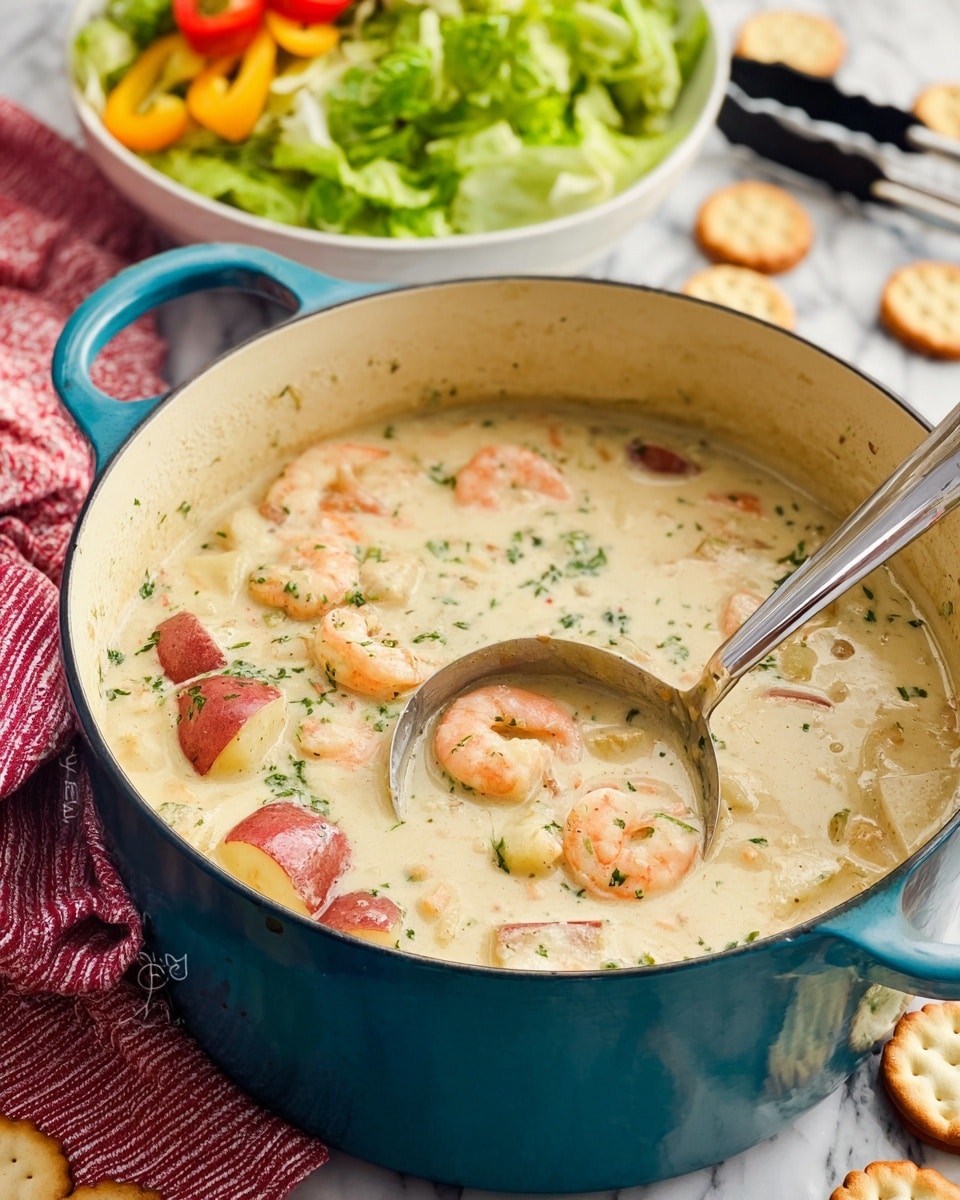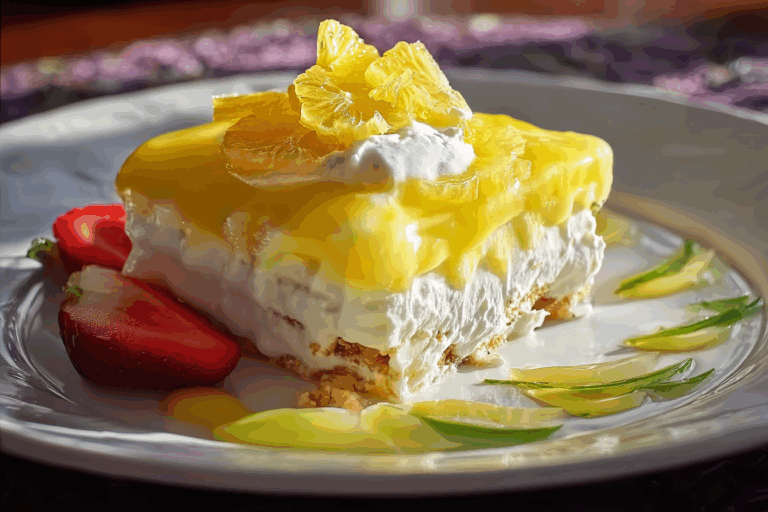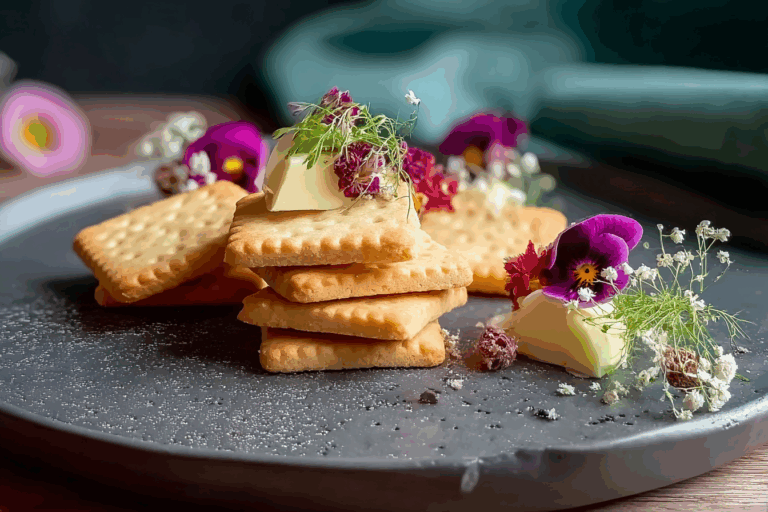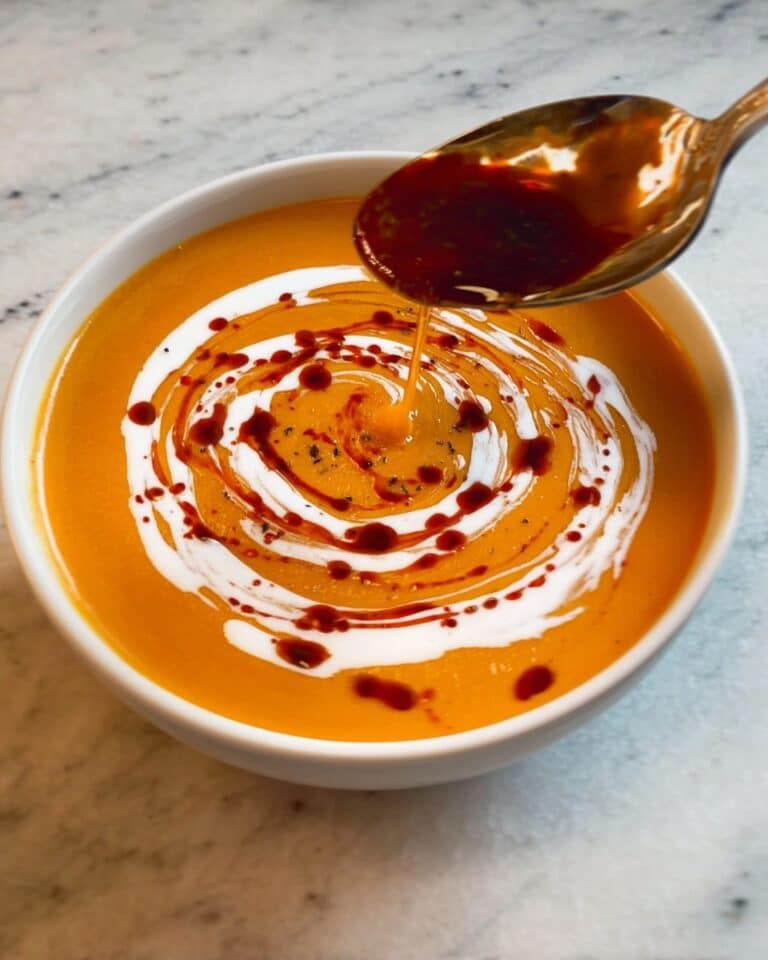Seafood Chowder Recipe
If you’re looking for a warm and comforting meal that somehow feels both indulgent and nourishing, you’ve got to try this Seafood Chowder Recipe. I remember the first time I made it on a chilly evening—it filled the whole house with that cozy aroma of bacon and seafood simmering together, and every spoonful just felt like a little hug. This chowder is special because it balances rich creaminess with fresh, briny seafood flavors, making it perfect for a satisfying family dinner or impressing guests without too much fuss.
What’s great about this Seafood Chowder Recipe is how adaptable it is, and it works wonderfully especially when you want something hearty but still fresh-tasting. Plus, it’s a one-pot wonder that delivers a complex flavor profile but doesn’t demand hours in the kitchen, which is always a win in my book. You’re going to love how the potatoes and bacon add texture and depth, creating a dish that’s both rustic and elegant.
Ingredients You’ll Need
Each ingredient in this recipe brings its own magic to the pot, creating layers of flavor that you wouldn’t get from a simpler chowder. When shopping, I recommend looking for fresh seafood and a good quality seafood stock—it really makes all the difference. The bacon and aromatics like onion, celery, and garlic build a perfect savory base, while thyme and bay leaves add subtle earthiness that complements the seafood beautifully.
- Bacon: Choose thick-cut for a crispy texture that adds smoky depth.
- Onion: Yellow or white onions work best here for their mild sweetness.
- Celery: Fresh celery gives a nice crunch and aromatic base.
- Garlic: Use fresh and minced finely to avoid overpowering the chowder.
- All-purpose flour: This helps thicken the chowder to a perfect creamy consistency.
- Seafood stock: Homemade or store-bought is fine, but quality stock enhances the seafood flavor.
- Red potatoes: Their waxy texture holds up well without falling apart, giving your chowder nice body.
- Dried thyme: Just a pinch to bring herbal warmth without taking over.
- Bay leaves: Essential for their subtle earthy aroma—don’t forget to remove them before serving!
- Cod: Choose fresh or previously frozen firm white fish; bite-size pieces cook evenly.
- Shrimp: Raw, deveined, and tails removed for ease and even cooking.
- Whole baby clams: These add a briny sweetness and beautiful texture, drained well before adding.
- Heavy cream: For that luscious, velvety finish that makes chowder irresistible.
- Parsley: Fresh and minced finely, to add a bright herbal note and color.
- Salt and pepper: Season carefully at the end—you want to enhance, not overwhelm.
Variations
I love how flexible this Seafood Chowder Recipe can be—sometimes I swap out the cod for salmon or add a handful of mussels for a different seafood mix. You can easily tweak it to suit your dietary needs or whatever’s freshest at the market. Don’t be afraid to make it your own!
- Dairy-Free Version: I once replaced the heavy cream with coconut milk for a different twist; it gave the chowder a subtle sweetness while keeping it creamy.
- Spicy Kick: Adding a pinch of red pepper flakes can give a nice gentle heat that balances the richness.
- Vegetable Boost: Feel free to toss in some corn kernels or diced carrots for extra texture and brightness.
- Low-Carb Option: Skip the potatoes and add extra seafood or zucchini cubes—just as comforting!
How to Make Seafood Chowder Recipe
Step 1: Cook the Bacon and Build Your Flavor Base
Start by cooking your diced bacon over medium heat until it’s crispy and has released its lovely fat. I usually keep an eye on it because bacon can go from perfectly crisp to burnt quickly. Once it’s done, scoop it out and set aside but don’t clean out that pan—you’ll use the bacon fat to sauté your onion, celery, and garlic next. This is where the chowder’s deep savoriness starts to build.
Step 2: Make the Roux and Add the Liquids
In that same pan with bacon fat, toss in your diced onion, celery, and garlic. Cook them gently until they’re soft and translucent—about 5 minutes. Sprinkle the flour over the veggies and stir constantly for 2 minutes to get rid of the raw flour taste. Then slowly pour in your seafood stock, whisking constantly to avoid lumps. Add the diced potatoes, thyme, and bay leaves, then let it simmer gently until the potatoes are tender—usually about 15 to 20 minutes.
Step 3: Add the Seafood and Cream
Once the potatoes are lovely and tender, it’s time to add the cod, shrimp, and clams. I recommend stirring gently and simmering just until the seafood is cooked through—about 5 minutes. Overcooking seafood is a common mistake and leads to rubbery bites, so keep an eye on it! After the seafood is done, stir in the heavy cream and cooked bacon, then season with salt and pepper to taste. The cream softens the flavors and adds that signature chowder richness.
How to Serve Seafood Chowder Recipe
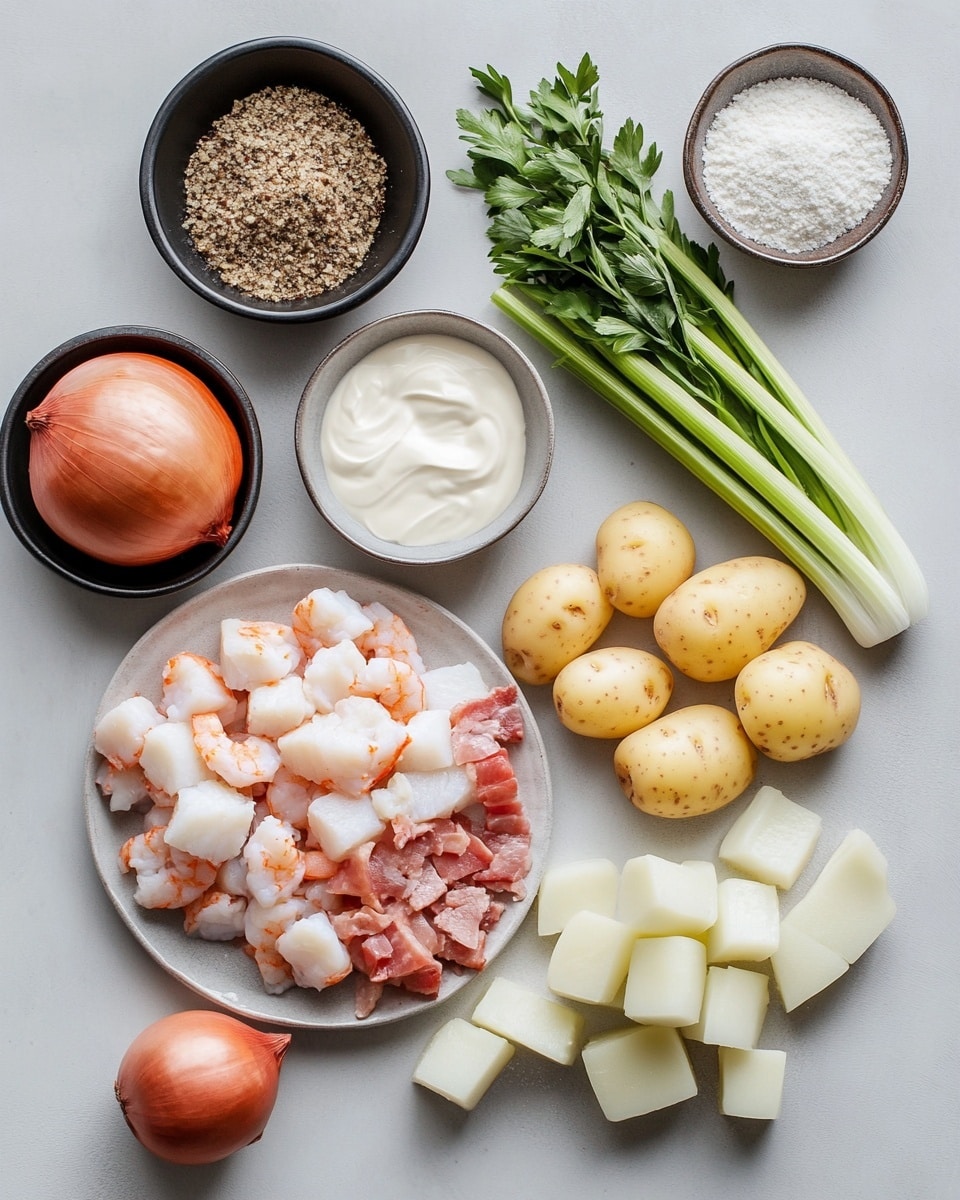
Garnishes
I always sprinkle freshly minced parsley on top—it adds a sharp, fresh pop that lifts the whole dish. Sometimes, I like to add a few drops of lemon juice or even a little crispy bacon crumble for crunch. For a bit of zing, a dash of smoked paprika can be an unexpected but delicious touch.
Side Dishes
I usually serve this chowder with some crusty bread or garlic rolls to soak up every last creamy drop. A simple green salad with a light vinaigrette pairs nicely to balance the richness. And if you want to go fancy, some roasted asparagus or steamed green beans makes a lovely accompaniment.
Creative Ways to Present
For special occasions, I like to serve the seafood chowder in hollowed-out sourdough bread bowls—super cozy and perfect for impressing guests. Another fun idea is to ladle it into individual ramekins and broil them with a topping of grated sharp cheddar or Gruyère cheese for a bubbly crust. It’s a total crowd-pleaser and adds a lovely textural contrast!
Make Ahead and Storage
Storing Leftovers
I like to store leftover Seafood Chowder Recipe in airtight containers in the fridge, where it keeps beautifully for 2 to 3 days. Just be sure to cool it completely before refrigerating to avoid soggy potatoes. Leftovers often taste even better the next day as the flavors have had time to meld together.
Freezing
Freezing chowder can be tricky because the cream sometimes separates, but I’ve found freezing it without cream and adding fresh cream when reheating works best. Freeze the seafood and stock base in portions, then thaw and gently reheat with fresh cream and seasoning. This way, your chowder stays creamy and fresh.
Reheating
To reheat, warm your chowder gently on the stove over low heat, stirring occasionally. If it seems too thick, add a splash of seafood stock or milk to loosen it up. Avoid microwave reheating if possible—it can cause uneven warming and affect the texture. With gentle reheating, your chowder stays luscious and delicious.
FAQs
-
Can I use other types of fish in this Seafood Chowder Recipe?
Absolutely! Firm white fish like haddock, halibut, or even salmon can be substituted. Just remember to cut into uniform bite-sized pieces and add them at the same stage as cod to ensure even cooking.
-
Is it necessary to use seafood stock?
Seafood stock really enhances the chowder’s flavor, but if you don’t have it on hand, a good quality chicken stock can work as a substitute. Just make sure to season carefully and consider adding a dash of sea salt or fish sauce for that ocean taste.
-
How do I prevent seafood from becoming rubbery?
Cook seafood just until it’s opaque and firm—this usually takes only a few minutes. Overcooking, especially shrimp and cod, is the main culprit behind rubbery texture, so keep a close eye during the final simmer.
-
Can I make this chowder vegetarian?
Yes! Simply omit the seafood and use vegetable broth instead of seafood stock. Add hearty vegetables like corn, potatoes, carrots, and even mushrooms for a satisfying vegetarian chowder.
-
What’s the best way to thicken the chowder if it’s too thin?
Using flour to make a roux, as in this recipe, is the perfect way to thicken chowder. If it ends up too thin, you can simmer it a bit longer uncovered or mix a small amount of flour with cold water and stir it in gradually while cooking.
Final Thoughts
This Seafood Chowder Recipe holds a special place in my heart because it combines comfort with elegance and is so satisfying to make and eat. It’s the kind of recipe that makes me feel like I’m treating myself without any guilt. You’ll find it an easy dish to come back to again and again, especially when you want something cozy but still fresh and flavorful. Trust me—once you try it, this chowder will become a go-to favorite in your kitchen just like it did in mine!
Print
Seafood Chowder Recipe
- Prep Time: 15 minutes
- Cook Time: 35 minutes
- Total Time: 50 minutes
- Yield: 6 servings 1x
- Category: Soup
- Method: Stovetop
- Cuisine: American
Description
This rich and creamy Seafood Chowder combines tender cod, succulent shrimp, and fresh baby clams in a hearty, flavorful broth enriched with bacon, potatoes, and vegetables. Perfect for a comforting meal, this chowder balances the briny sweetness of seafood with the savory notes of bacon and aromatic herbs.
Ingredients
Pork and Aromatics
- 4 slices thick cut bacon, diced into small pieces
- 1 small onion, diced
- 3 celery stalks, diced
- 2 cloves garlic, minced
Dry Ingredients
- 1/3 cup all-purpose flour
- 1/4 teaspoon dried thyme
- 2 bay leaves
- Salt and pepper, to taste
Seafood and Broth
- 4 cups seafood stock
- 1 1/2 pounds red potatoes (about 5 medium), diced into 1/2 inch pieces
- 8 ounces cod, cut into bite-sized pieces
- 8 ounces raw shrimp, deveined and tails removed
- 10 ounces whole baby clams, drained
Finishing Ingredients
- 8 ounces heavy cream
- 2 tablespoons minced fresh parsley
Instructions
- Cook the bacon: In a large pot or Dutch oven over medium heat, cook the diced bacon until crisp. Remove the bacon with a slotted spoon and set aside, leaving the rendered fat in the pot.
- Sauté the vegetables: Add the diced onion, celery, and minced garlic to the bacon fat in the pot. Cook over medium heat until the vegetables are softened and translucent, about 5-7 minutes.
- Add the flour: Sprinkle the all-purpose flour over the cooked vegetables and stir continuously to form a roux, cooking for about 2 minutes to remove any raw flour taste.
- Incorporate broth and potatoes: Gradually whisk in the seafood stock to the roux, making sure to avoid lumps. Add the diced red potatoes, dried thyme, and bay leaves. Bring to a gentle simmer and cook until potatoes are tender, about 15 minutes.
- Add seafood: Stir in the cod pieces, shrimp, and baby clams. Simmer gently until the seafood is cooked through and clams open, about 5-7 minutes. Discard any unopened clams.
- Finish with cream and seasoning: Lower the heat and stir in the heavy cream and cooked bacon. Season the chowder with salt and pepper to taste. Heat gently without boiling to prevent the cream from curdling.
- Garnish and serve: Remove the bay leaves. Sprinkle the minced fresh parsley over the chowder and serve hot with crusty bread or oyster crackers, if desired.
Notes
- Use fresh seafood if possible for the best flavor and texture.
- If you prefer a thicker chowder, add a bit more flour during the roux step.
- Do not boil the chowder after adding cream to prevent curdling.
- Adjust seasoning at the end to balance flavors.
Keywords: seafood chowder, cod chowder, shrimp chowder, clam chowder, creamy seafood soup

